NENAGH CASTLE & DONJON
Nenagh Castle it is called but the correct term should be Nenagh Round or Nenagh Donjon. The inclusion of the walls, Baronial Hall and Tower gateway make for Nenagh Castle. In military terms, the castle complex was built in the wrong place but access to it's own supply of water determined it's placement.
There is some dispute as to who first built the Castle at Nenagh, either Geoffrey deMarisco or Theobald Walter. The DeMarisco claim is based on a found coin in the castle foundations. Geoffrey had previously built the castle at Killaloe in 1216. Theobald had already been granted in 1200 the charter for the building of the St John's Monastery at Tyone (TighEoin) so was in situ. Later the hereditary title of Le Boitillier would be awarded to the family which was corrupted into De Butler or Butler.
However, taming the local area and it's inhabitants was no easy task. In 1316 Robert Bruce laid waste the town of Nenagh and surrounding countryside. Trouble with the local Irish saw a treaty made in 1336 between the Butlers and O'Kennedys with the O'Kennedy's eventually taking over the castle in 1347. On St Stephens Day in 1348 the O'Kennedys once again burned the town and environs. James Butler recovered the Castle and town and hanged the chieftain Daniel O'Kennedy. In turn, the fortress later fell to the O'Briens when they spread up from the Arra Mountains region.
Built of Limestone, the Castle was originally conceived as a base and home for the DeButlers but they eventually retreated to Kilkenny in 1392. The Donjon was in existence from at least 1220. In the days of Crossbows and Trebuchets the Castle presented a formidable structure. Against the local population it was a refuge and stronghold. However with the advent of Gunpowder, all an opposing army had to do was to place their ordnance and cannons on the heights of what was later known as Summerhill and fire a barrage from there.
Piers Butler recovered the the family castle in 1533 and appears to have met with no opposition but yet again the castle was lost to Teige O'Carroll in 1548. Once again Nenagh town and it's monastery were set alight. By 1569 after a series of arranged Butler marriages with the O'Briens, Carrolls and Kennedys, peace had been restored.
The rebellion of 1648 saw the Castle fall to Phelim O'Neill during Eoghan Rua's journey south. It was retaken the same year by Inchiquin and returned to it's governor Sir George Hamilton. This was short lived. In 1650 Hamilton surrendered the castle to Henry Ireton, Cromwell's son-in-law. Sir George was allowed to march out of the castle with his retinue (not thrown from a window as later stated in the Dublin Penny Journal of 1833). Ireton installed Colonel Daniel Abbott as castle governor and he resisted further attacks by locals Colonel Grace and Captain Loghlen O'Meara. According to the Civil Survey he also made repairs to the fabric of the castle. With the Restoration of the monarchy, Colonel Abbott was made homeless and Sir William Flower was installed in 1660 by the Marchioness of Ormond.
During the Williamite Wars, Long Anthony O'Carroll Ely captured the castle for King James. It was retaken by Ginkle on 06/08/1691 when it was abandoned by its O'Carroll defenders without a fight. Following this, orders were issued for the castle's destruction but instead the complex was put beyond military use with the walls dismantled and the towers deroofed. It is at this stage the Castle becomes an 'in situ' quarry as stone buildings in the town start making an appearance. Prior to this the actual town of Nenagh consisted of 50 or so cottages which were frequently burned by invaders.
In subsequent years the Donjon was enveloped in ivy which later caught fire. Still the structure stood. Some time later, in 1760 Solomon Newsome whose property backed onto the castle, made an attempt to remove the Donjon as it was harbouring nesting birds who were eating his crops in the field where St Mary's RC is now. Solomon tried to shift the tower with gunpowder but succeeded in only creating a huge chasm in the Donjon walls. The final indignity to the tower was when it was drastically altered by the adding of the crenellations in the Victorian period as per the tower at Windsor Castle. This was an attempt to turn it into a Church belfry as an addition to an Augustus Pugin style Church that was never built. However the clergy failed to collect enough money to build the church and the money already collected was redirected to create the folly we now see. This conceit has become an iconic but to my mind an over used symbol of the Town of Nenagh.
....and so the Donjon stands, in the heart of Nenagh. One looks at similar constructions in Ballynahow, Knocka or Tubrid and wonder would it have been better if it had been left alone......

In this moody and foreboding picture taken from the nearby St Mary's Church, the Castle Donjon dominates the surrounding buildings.
Drawings

A naive and simplified 1784 View of the Castle ruins by Austin Cooper

Interesting 1817 interpretation of the Donjon and the Castle entrance by George Lambert. The drawing was found in A Genealogical Memoir of the Montmerency/Morres family. He has the gist of the entrance and the chasm in the walls of the Donjon. He knew there were 5 towers so he adds 5 square ones to the curtain walls. After all, who is going to be proof reading this? Compare the rendition of the chasm to that rendered in the architects drawing below

Photo of a circa 1800 Watercolour of the ruins

Nenagh Castle Ruins 05/07/1806 by Sir Richard Colt Hoare recorded during his tour of Ireland

Architects dissection drawing showing the fabric of the structure and how much had to be replaced for the repurposing as a belfry


Undated sketch of Castle Gates and Baronial Hall by James Stark (Fleming)

Dublin Penny Journal version of the castle Ruins from 16/03/1833

George Victor Du Noyer sketch from April 1840 of the castle ruins as part of the Ordnance Survey of Ireland

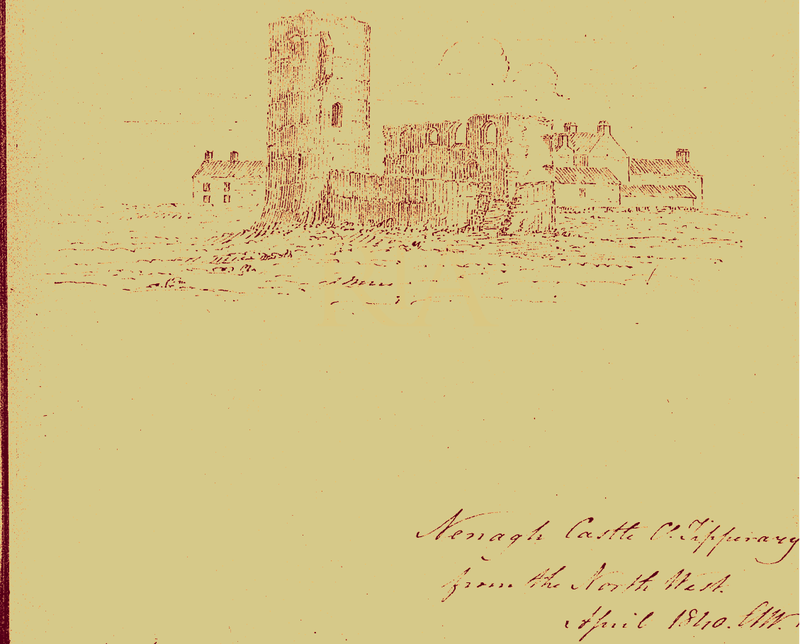
Nenagh Castle from the NW, April 1840 from Donovans Ordnance Survey

Michael McMahon version of the Castle Ruins


View from Bachelors Walk by D.F. Gleeson
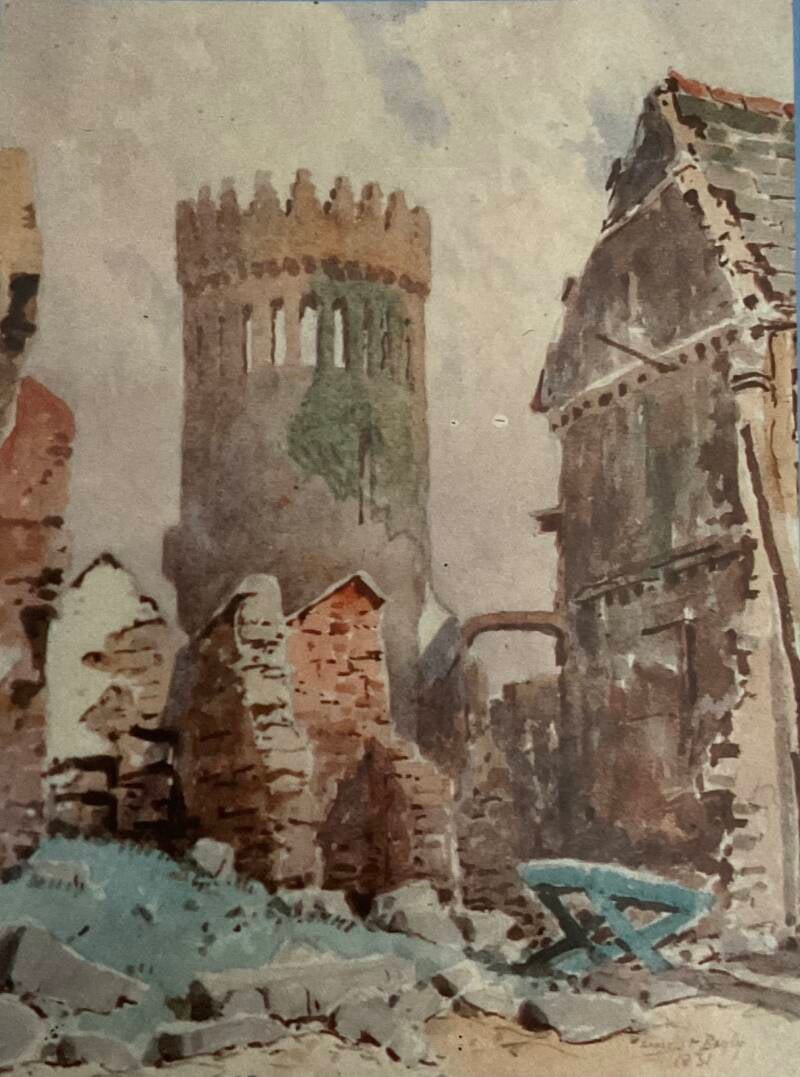
View of Nenagh Castle Donjon & Gateway from Bachelors Walk - 1924
by Launcelot Sanderson Bayly
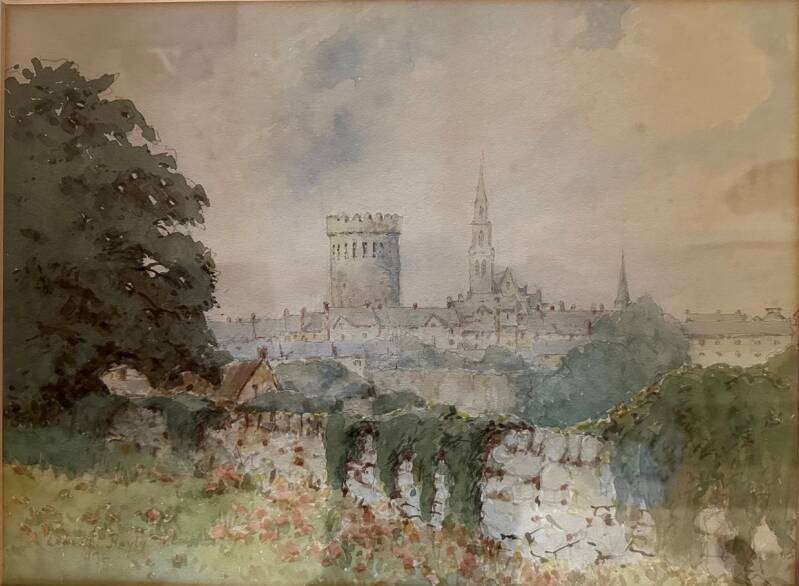
View of Nenagh Castle Donjon from the Railway Embankment 1936 by Launcelot Sanderson Bayly
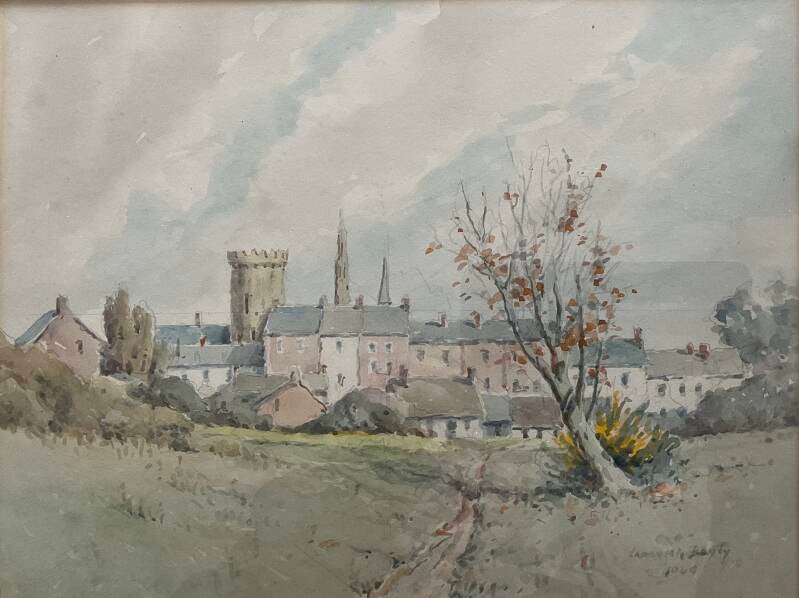
View of Nenagh Castle Donjon from the grounds of Summerville House 1940 - by Launcelot Sanderson Bayly

Painting based on contemporary sketches of the Donjon before the addition of the Victorian conceit.

Pen and Ink drawing of the Interior stairwell 1981
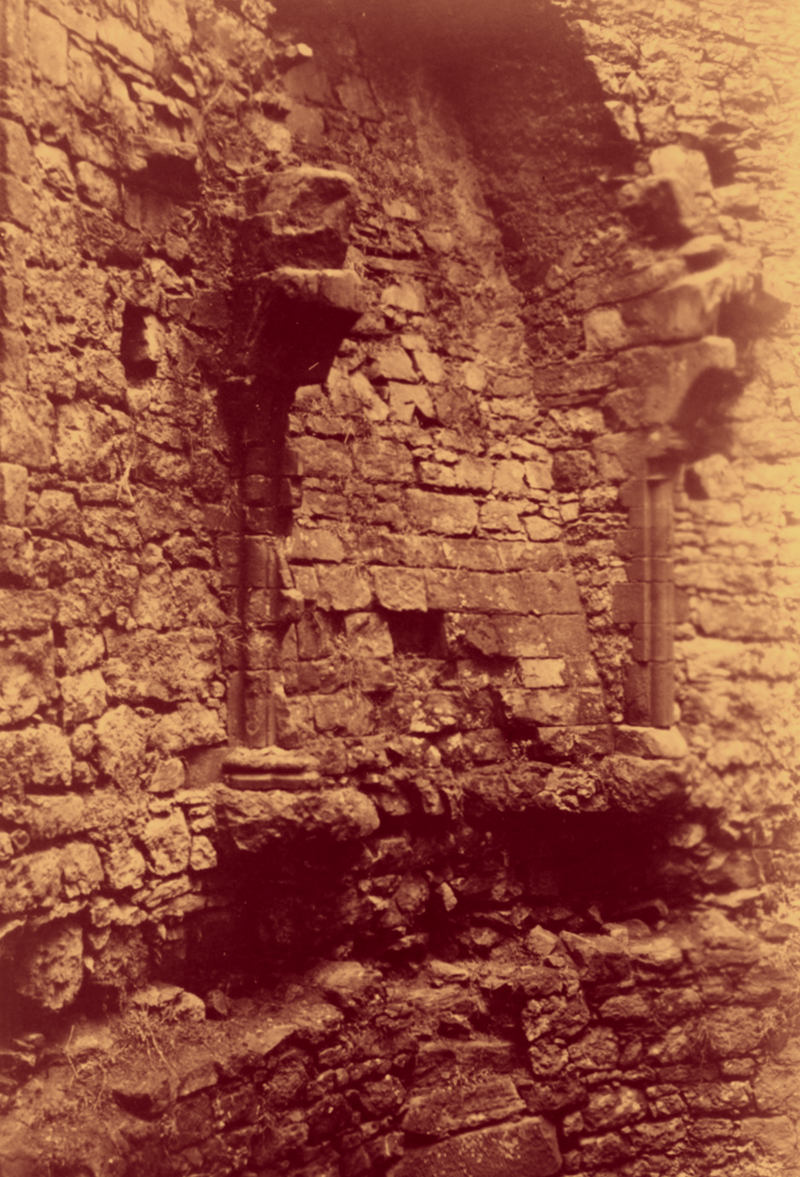

Photo's of a fireplace and window in the Donjon interior by Professor H.G Leask 1936



2nd floor fireplace and Romanesque Arch
Supporting Corbel
Fireplace and windows on the 3rd floor
According to Professor Leask and D.F.Gleeson, the Donjon was raised in the 13th century as evidenced by the change of fabric and also the change of windows used. It also shows the insertion of corbels to carry the floor joists.

Magic Lantern slide of the castle complex.

Rubble on the grass from the fallen windows - (RHS)
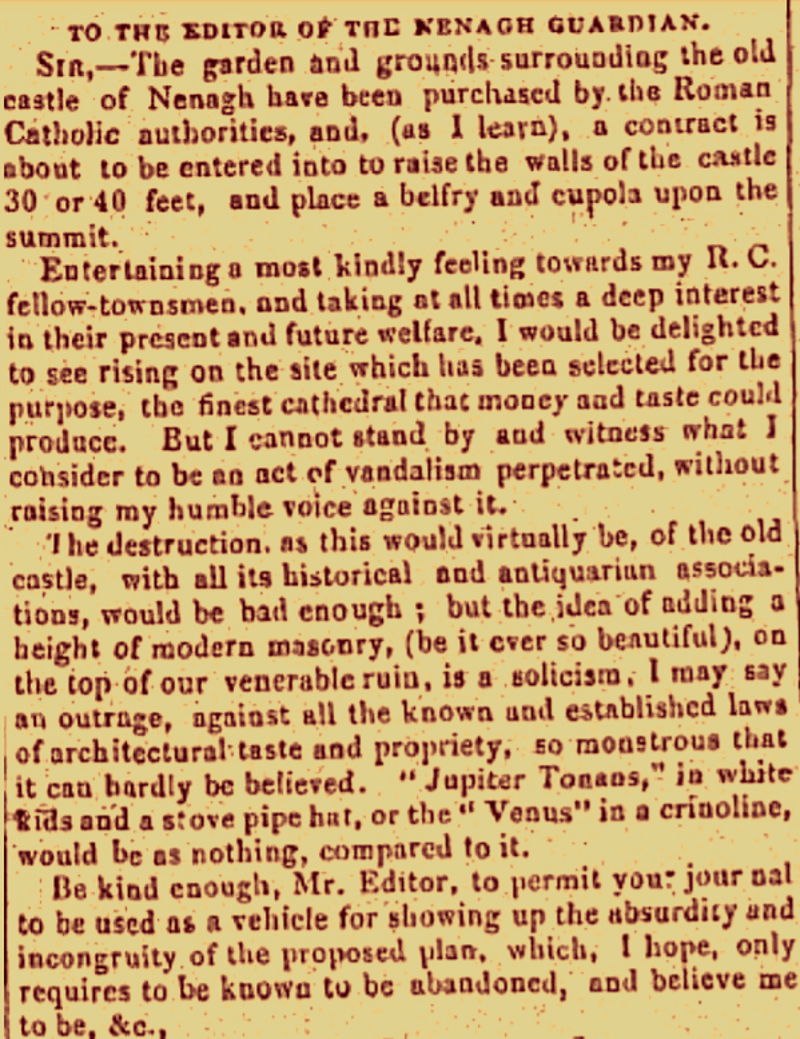
Not everyone in support of the conversion into a belfry - (Nenagh Guardian)

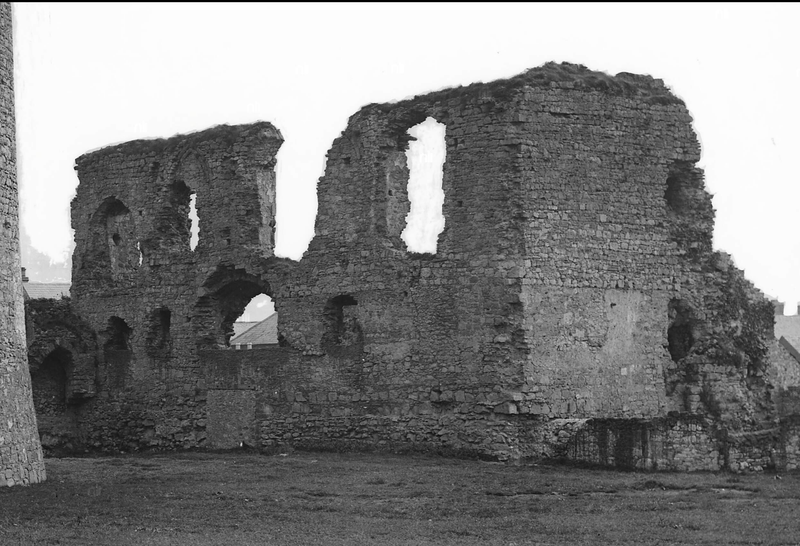

Note the open doorway and the windows on the Baronial Hall and the remains of an undercroft on the wall. The swollen walls at the bottom (or batter) are there to prevent mining and to allow for the ricochet of missiles thrown from above against any would be besiegers.

Photo from the Lawrence Collection. It would also appear that this is the photo that all subsequent postcards are based on. You can see the demarcation between the original structure and the added crenellation

Photo from Easons in 1900. Note the new doorway had been made good and some of the Baronial Hall windows have fallen, The growth of the ivy on the hall must push the previous image back a good 10 years at least.
Postcards





A selection of postcards depicting the Castle complex



1890 version

The Gael Magazine 1901

1904 version

Ballymoney Free Press - 21/05/1914

Colin Clifford and Noel Morrissey



From the Priests Cemetery


The Donjon as a float advertising the People Picnic in the Castle Field

Winter interpretation taken from outside St Mary's RC

View from Bank Place


Stairwell with the addition of a modern rail

View from Dublin Road

Undergoing renovations


The Gateway from the Castle Courtyard



Before the Window Arch in the Baronial Hall fell


Church and Donjon from the Baronial Hall

The original entrance into the Donjon, about 15 foot from the ground

Building the Dispensary in Bachelors Walk

The original Treaty between the Earl of Ormond and local chieftain John O'Kennedy dated 05/03/1336 in which they came to an agreement regarding burnings, homicides and other transgressions. In 1332 the prisoners held at Nenagh had seized and burned part of the castle. This document was presented to JFK during his state visit in June 1963.




1987 view from the Castle Field with the rear of the Dispensary on the right hand side

Winter 2023
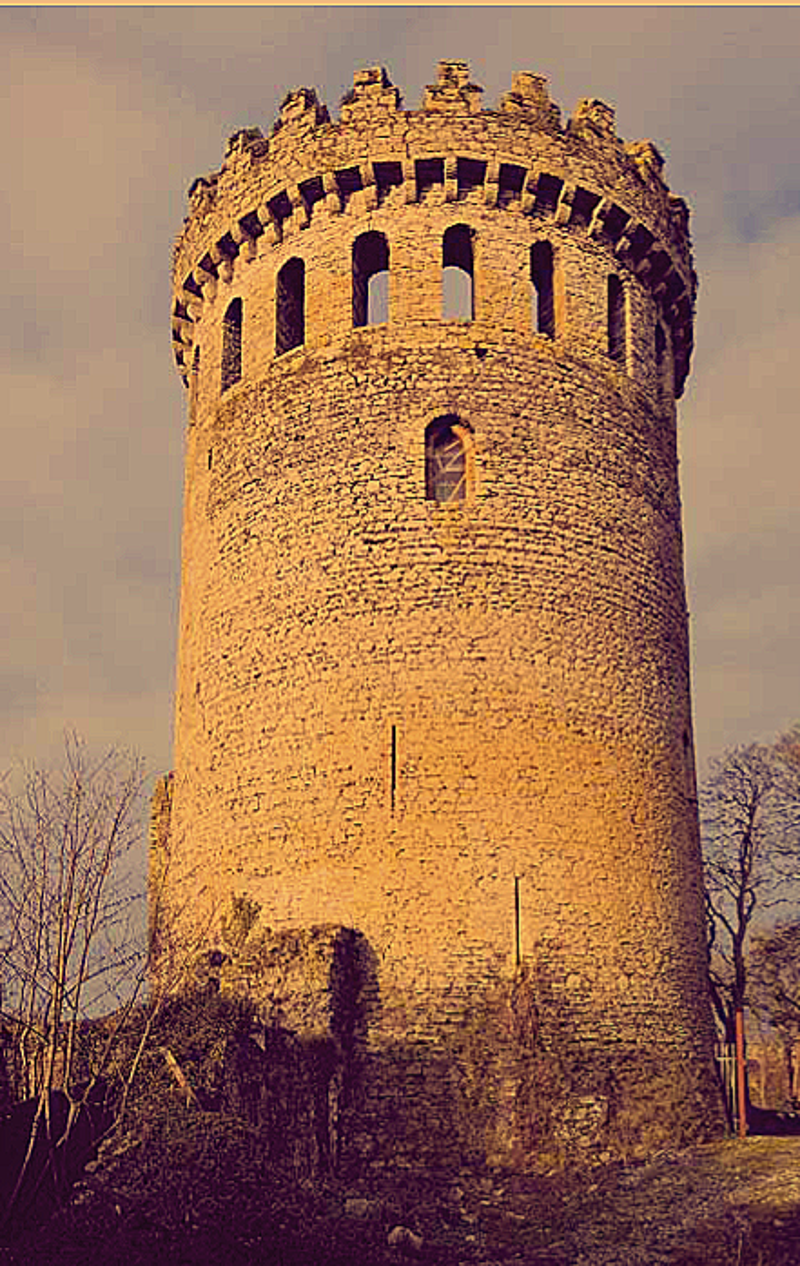

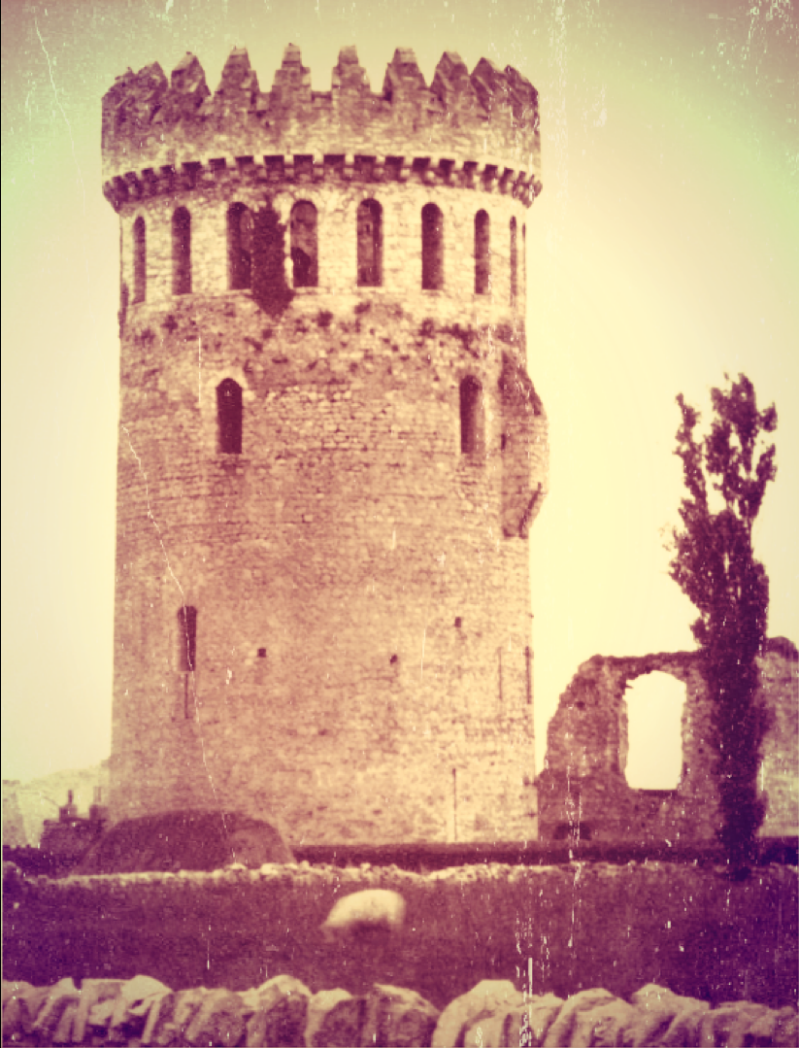


Nenagh Castle falls to Ireton - 04/11/1650
SITE ARCHAELOGY



The exterior corbelled roof top of the Gateway's East Tower (Brian Hodkinson)
Architectural fragments of Human Faces, Central Boss and window fragments found in the drawbridge pit during excavations of 1996/97, proving the castle complex was of high status. (see Brian Hodkinson's report)


Create Your Own Website With Webador